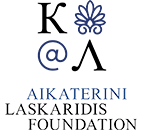Pula / anc. Polai (61 Subjects)
Outlines of architectural features of the Temple of Rome and Augustus in Pula, Croatia.
Temple of Rome and Augustus, Pula: Fig. 1: Plan and Fig. 2: Angular elevation of the capital.
Temple of Rome and Augustus, Pula: The base and pedestal of the columns.
Temple of Rome and Augustus, Pula: Fig. 1: The capital of the pilasters or antae. Fig. 2: The section of the capital. Fig. 3: The plan of the capital reversed, ans soffit of the architrave. Fig. 4: The base of the pilaster.
Relief from Pula, Croatia.
Relief of the head of Asclepius from the walls of Pula, considered by the locals to be the head of Saint John the Baptist.
The arch of the Sergii at Pula, Croatia. Peasants of Slavic ethnicity are walking by with their ox cart. James Stuart, Nicholas Revett and their assistant are on top of the arch, making drawings. On the left a man informs the women gathered that the travellers are searching the Arch of the Sergii for treasures.
Plan of the Arch of Sergii in Pula, Croatia.
Elevation of the Arch of Sergii in Pula, Croatia.
The flank and section of the Arch of Sergii in Pula, Croatia.
Arch of Sergii in Pula, Croatia: Fig. 1: The capital and entablature of the columns. Fig. 2: Section of the capital. Fig. 3: Soffit of the Corona.
Outlines of architectural features from the Arch of Sergii in Pula, Croatia.
Arch of Sergii in Pula, Croatia: Fig. 1: Plan of the capital reversed. Fig. 2: Angular view of the capital.
Arch of Sergii in Pula, Croatia: Fig. 1: Plan of the columns shewing the termination of the flutes. Fig. 2: Base and pedestal of the columns.
Arch of Sergii in Pula, Croatia: Fig. 1: The middle compartment in the soffit of the arch. Fig. 2: The impost mouldings, with the foliage ornament on its face, and the archivolt. Fig. 3: The pedestals over the entablature.
Arch of Sergii in Pula, Croatia: Trophies in the frieze on the Flanks of the Arch.
The Temple of Rome and Augustus in Pula, Croatia.
Plans of the Temple of Rome and Augustus in Pula, Croatia. Elevation of the front.
Temple of Rome and Augustus in Pula, Croatia: 1. Longitudinal elevation. 2. Crypidoma, stylobate and base of the column. 3. Elevation of capital and entablature. 4. Bottom view of column and details of the ceiling.
View and plan of the Temple of Rome and Augustus in Pula, in Croatia.
View of the remaining part of the Temple of Diana in Pula, Croatia, which is today part of the City Hall.
View and plan of the Arch of the Sergii in Pula, Croatia.
Composition: The bridge of Ilissus and the Panathenaic Stadium in Athens. The Temple of Rome and Augustus in Pula, Croatia.
Drawings of architectural elements from the Temple of Rome and Augustus in Pula, Croatia.
Fig. 1. View of Pula in Croatia. Fig. 2. Iris, the ship in which the author travelled from Malta to the Gulf of Trieste, Italy.
Map of the city of Pula in Croatia.
Map of the port of Pula in Croatia.
View of Pula in Croatia.
The temple of Rome and Augustus at Pula, Croatia.
The Arch of the Sergii at Pula, Croatia.































